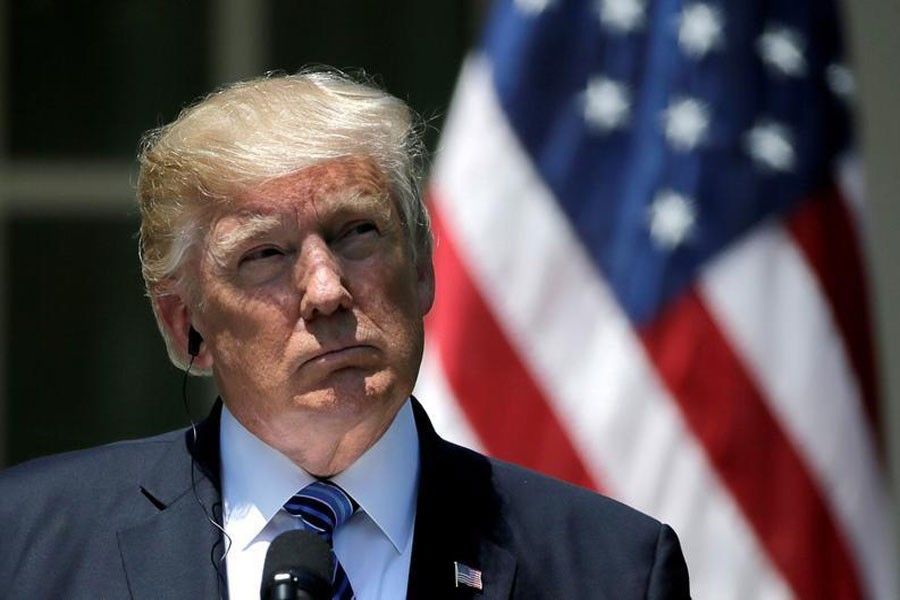US President Donald Trump has cancelled a state visit to Denmark after the nation's prime minister said Greenland was not for sale to the US.
The president was scheduled to visit on 2 September, at the invitation of Denmark's Queen Margrethe II.
Then last week Mr Trump suggested the US was interested in buying Greenland, an autonomous Danish territory.
Danish PM Mette Frederiksen described the suggestion as "absurd" and said she hoped Mr Trump was not being serious.
Announcing the cancellation of his visit, Mr Trump tweeted: "Denmark is a very special country with incredible people, but based on Prime Minister Mette Frederiksen's comments, that she would have no interest in discussing the purchase of Greenland, I will be postponing our meeting scheduled in two weeks for another time...."
A White House spokesman confirmed that the president's visit had been cancelled.
The president had earlier confirmed reports that he was interested in buying Greenland. When asked on Sunday if he would consider trading a US territory for the island, he replied: "Well, a lot of things could be done."
"Essentially it's a large real estate deal," he said.
The suggestion was dismissed by Greenlandic and Danish officials. "Greenland is not for sale, but Greenland is open for trade and co-operation with other countries, including the USA," said the territory's premier, Kim Kielsen.
Lars Lokke Rasmussen, the former Danish prime minister, tweeted: "It must be an April Fool's Day joke."
Soren Espersen, foreign affairs spokesman for the populist Danish People's Party, told national broadcaster DR: "If he is truly contemplating this, then this is final proof that he has gone mad."
Where is Greenland?
Greenland is the largest island in the world (after Australia, which is defined as a continent in its own right). It is an autonomous Danish territory, located between the North Atlantic and Arctic oceans, reports the BBC.
It has a population of about 56,000 people concentrated around the coastline. Almost 90 per cent are indigenous Greenlandic Inuit people. It has a limited self-government and its own parliament.
More than 80 per cent of the island is covered by an ice cap which is feared to be melting due to global warming. The ice melt has increased access to the island's mineral resources.
But it's also believed that the receding ice may expose toxic nuclear waste that was left at several US military sites during the Cold War.
Why would it be appealing to Trump?
Mr Trump has reportedly taken an interest in Greenland, in part, because of its natural resources, such as coal, zinc, copper and iron ore.
But while Greenland might be rich in minerals, it currently relies on Denmark for two thirds of its budget revenue. It has high rates of suicide, alcoholism and unemployment.
Two people briefed on the discussions told the New York Times the president was also interested in Greenland's "national security value" because of its location.
The US has long seen the island as being strategically important and established an air force and radar base there at the start of the Cold War.
Republican Representative Mike Gallagher described Mr Trump's idea as a "smart geopolitical move".
"The United States has a compelling strategic interest in Greenland, and this should absolutely be on the table," he tweeted.
Has the US ever tried to buy Greenland before?
The idea of purchasing Greenland was first mooted during the 1860s under the presidency of Andrew Johnson.
In 1867, a report by the US State Department suggested that Greenland's strategic location, along with its abundance of resources, made it an ideal acquisition.
But no official move was made until 1946, when Harry Truman offered Denmark $100m for the territory. He had earlier toyed with the idea of swapping land in Alaska for strategic parts of Greenland, AP reported.


